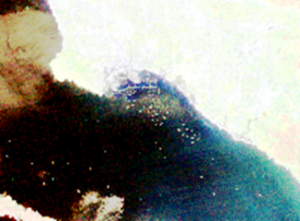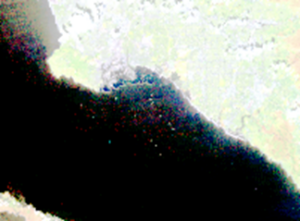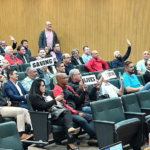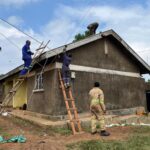Figure 1. More than 50 ships were detected at the Port of Los Angeles on 2021-10-01 (Left), compared to a dozen ships on the same day in 2019 (Right), demonstrating the potential capability of VIIRS to monitor backlogs and other port activities.
ESSIC/CISESS Senior Faculty Specialist Yan Bai is a part of a NOAA Center for Satellite Applications and Research (STAR) project alongside Changyong Cao, STAR/SMCD/SCDA. The scientists found that VIIRS imaging bands can detect shipping containers at ports under clear sky conditions, despite its moderate resolution and the weak signal. This may enable them to monitor the port activities such as shipping container backlog in light of supply-chain challenges as widely discussed in the media. Figure 1 shows that more than 50 ships were found in the port of Los Angeles on October 1, 2021, compared to about a dozen two years ago, which indicates a potential backlog on that day.
Since VIIRS has daily global coverage, and VIIRS on both Suomi NPP and NOAA-20 are performing well with very low noise, time-series of the number of ships detected can be developed to monitor the backlog situation. We plan to further explore this innovative idea and experiment with artificial intelligence/machine learning to automatically count the ships for the time series. This can also provide a great opportunity for a potential student intern project. This effort will foster innovation, outreach, and facilitate the use of high quality VIIRS data which are publicly available worldwide.
Yan Bai is senior faculty specialist at UMD/ESSIC/CISESS who supports the VIIRS team in data quality assurance, and web based cal/val systems for imaging radiometers. Her area of expertise is in the VIIRS image processing, analysis, and visualization using a variety of software tools.
Dr. Changyong Cao oversees the satellite instrument calibration and data assimilation branch under STAR/SMCD at NOAA. He leads the Visible Infrared Imaging Radiometer Suite (VIIRS) instrument calibration/validation team, and has broad research interests in satellite instrument performance characterization, exploration of novel uses of satellite observations especially for the VIIRS/DNB and imaging bands, new technologies such as artificial intelligence and machine learning, and time series analysis.








